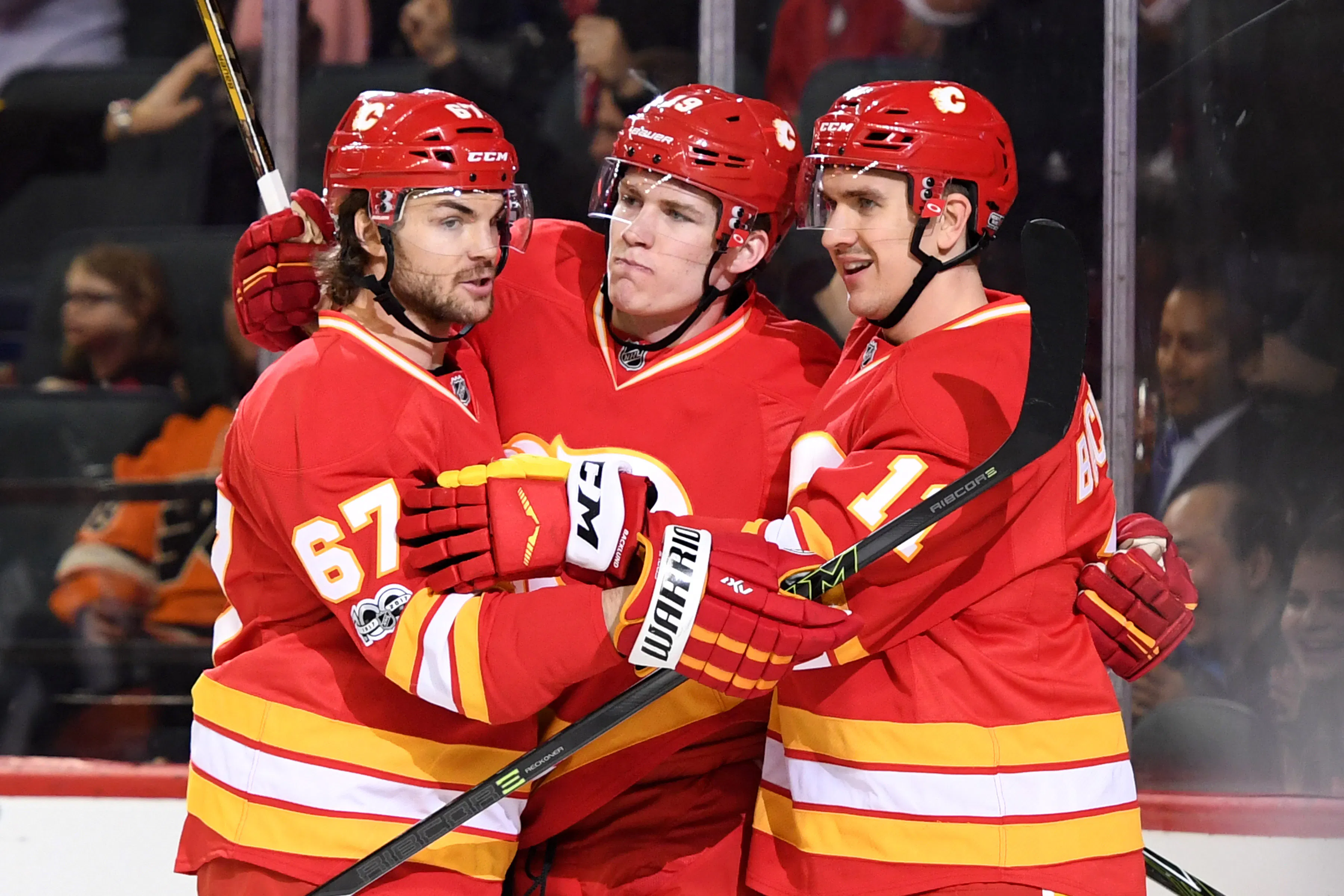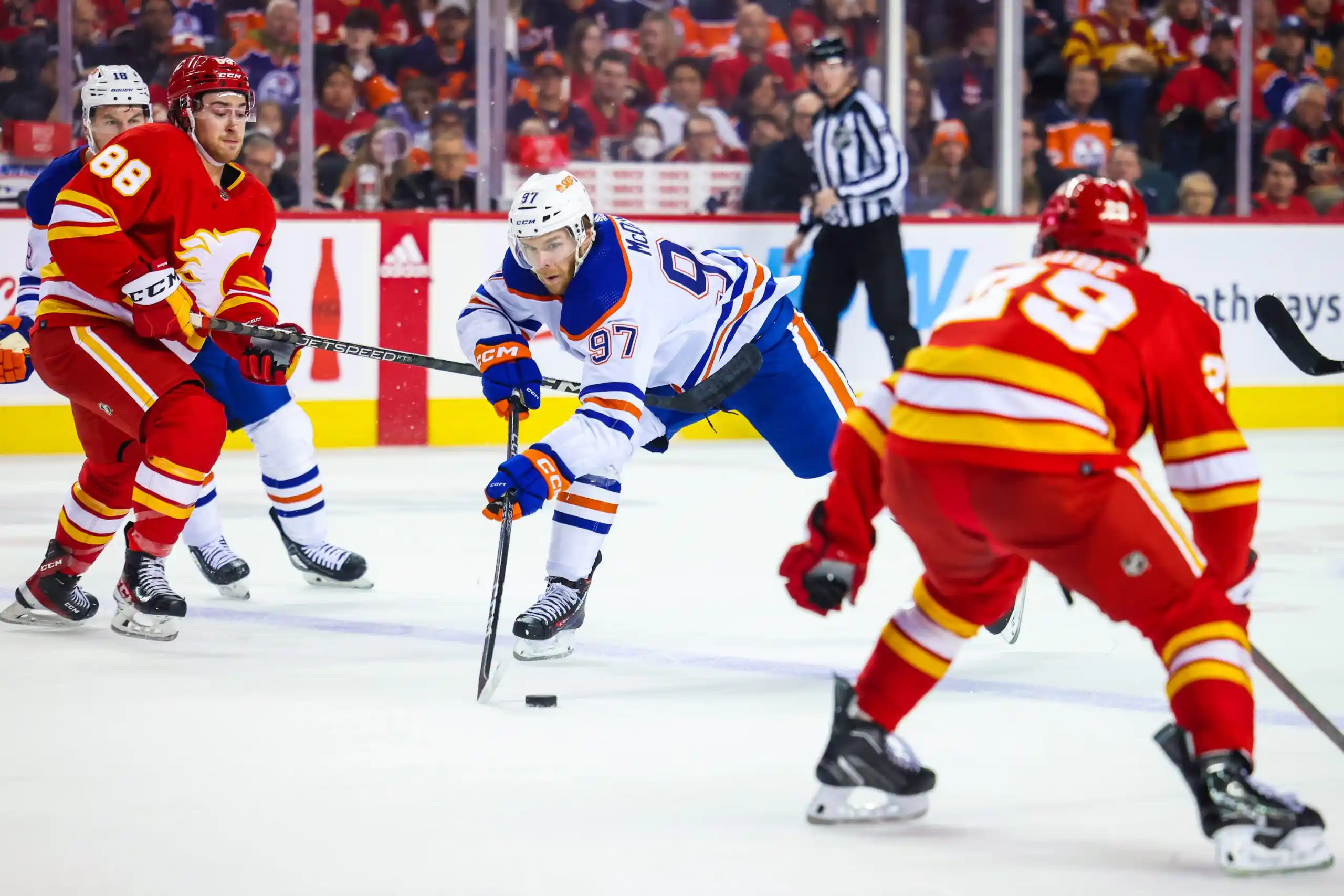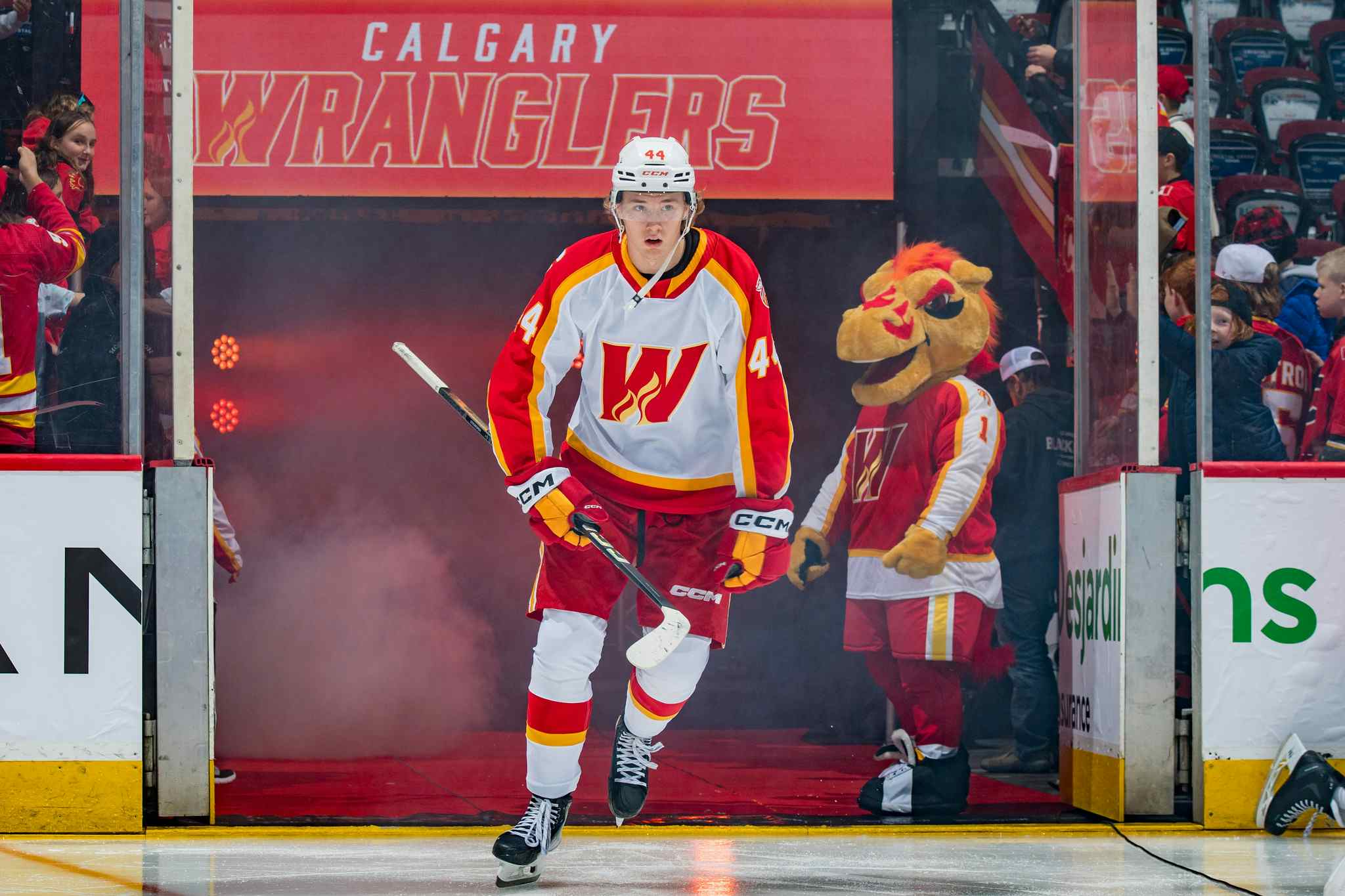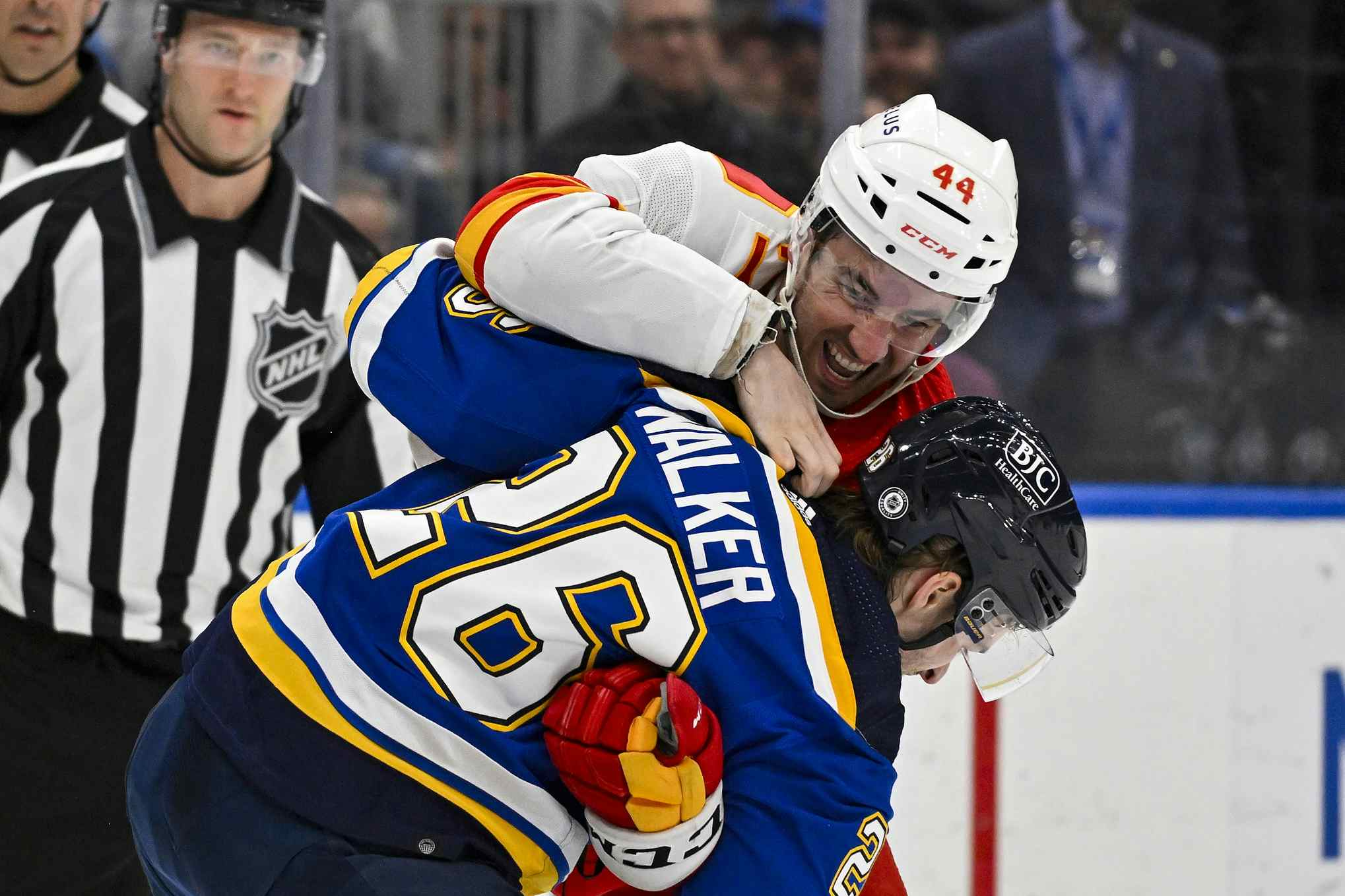3 positive trends two months in

Two months into the 2017-18 season, there are two glaringly obvious positives for the Calgary Flames: Mike Smith and the play of the number one line. While there are certainly things to be wary of, if you dig a little deeper, you’ll see a few more positives beyond just their starting goaltender and top scoring line.
Of course, the negative trends are fairly glaring on the Flames, too. The team is getting virtually nothing from their bottom six forwards, the second pairing continues to really struggle, and the backup goalie situation is still very much in flux. More on that later, though, because today’s piece is a positive one.
1. The 3M line
If anyone worried last year’s outstanding work from Calgary’s shutdown line was a fluke, they can breathe easy. The trio of Mikael Backlund, Michael Frolik, and Matthew Tkachuk has picked up right where they left off.
| Player | CF% | Rank | OZS% | Rank |
| Matthew Tkachuk | 58.8 | 1st | 39.6 | 3rd |
| Mikael Backlund | 57.9 | 2nd | 40.0 | 4th |
| Michael Frolik | 57.0 | 4th | 41.3 | 5th |
Just like last year, the 3M line is the team’s best two-way line and one of the best of their kind in the NHL. Tkachuk, Backlund, and Frolik boast three of the top four possession rates on the team and the three best amongst forwards. And, as per usual, they’re doing all of this with some of the toughest responsibility in the league.
Only two teammates have started more shifts in their own zone than this trio (Matt Stajan and Troy Brouwer), while no group of players sees tougher defensive responsibility on a nightly basis. The 3M line is truly a shutdown unit: they’re matched up against top opposition every single game and get the better of those circumstances far more often than not.
For whatever reason, though, there’s a sentiment among some that this line has taken a step back. I guess you can point to offensive production having decreased slightly, but even that’s not true across the board.
Backlund has actually been more productive five-on-five this season than he was last year; his points-per-60 is up to 1.74 from 1.67, which is impressive considering the role he’s playing. After finishing fourth in Selke Trophy voting last year, seeing Backlund end up as a finalist this June looks very realistic when evaluating his first two months.
Tkachuk’s five-on-five rates have gone down slightly (P60 of 1.61 vs. 2.07), but thanks to increased production on the powerplay, he’s actually on pace for around 55 points this season as compared to last year’s 48. Finally, Frolik’s production remains consistent, albeit with a small dip from last season (P60 of 1.29 vs. 1.51).
Even with Tkachuk and Frolik scoring slightly less at even strength, this line still remains one of the league’s most formidable and consistent. Knowing the difficult circumstances they face every night, offensive production is just an added bonus to the stellar work they do that trickles down the depth chart. It just so happens the 3M line is still scoring on a fairly regular basis, so pass the gravy.
2. The top pairing
When Mark Giordano and Dougie Hamilton were put together early last season, many thought the pairing had the potential to be very successful. Well, those expectations were likely exceeded, as the duo turned into of of the league’s best in short order. Nothing has really changed through 24 games this season.
| Player | CF% | OZS% |
| Mark Giordano | 57.2 | 52.0 |
| Dougie Hamilton | 57.0 | 53.0 |
To date, Giordano and Hamilton own the team’s top possession rates for defencemen and sit third and fifth overall on the Flames, respectively. Even more impressively, those two also rank third and fifth amongst all NHL blueliners in the same category. Edmonton’s Darnell Nurse (first), Carolina’s Noah Hanifin (second), and Chicago’s Cody Franson (fourth) round out the top five, and all carry higher offensive zone start ratios.
Once again, as a pairing, Giordano and Hamilton continue to see some of the league’s most difficult competition, yet spend far more time on the attack than they do defending. I’m not sure when the 34-year-old Giordano is going to see things tail off, but he’s been stellar though the first quarter of this season.
Hamilton, on the other hand, still has a good number of detractors, which is difficult to comprehend. Whether he’s too “soft”, doesn’t defend well, or doesn’t look like he’s trying hard enough, there’s still plenty of anti-Dougie sentiment out there. The reality is, though, that Hamilton positions himself very well defensively, has good gaps, and transitions play out of his own end effectively. You don’t spend as much time at the right end of the ice as Hamilton does by fluke.
More than anything else, Giordano and Hamilton make one another better. While Gio is more physical and never gives up on a play, Hamilton is a better skater and the two play off of one another well. This pairing was one of the NHL’s best last year and hasn’t missed a beat through the first two months of this season.
3. Brett Kulak
After sitting out the first seven games of the season as a healthy scratch, Kulak has dressed for 15 of Calgary’s last 17 games, and he’s winning people over left, right, and centre. Kulak has been steady, effective, consistent, and continues proving to me he’s an everyday NHL defenceman. It also seems like he’s winning over the coaching staff.
| CF% | Rank | OZS% | Rank |
| 49.3 | 3rd | 48.0 | 2nd |
With the ranks above amongst Flames blueliners, Kulak trails only Giordano and Hamilton on the possession side, while only Michael Stone has started fewer shifts in the offensive zone. Dating back to last year, Kulak has consistently owned one of the team’s top shot rates, which becomes more telling as the sample size continues to grow.
An argument could be made for Kulak being this team’s third or fourth best defenceman this season, but that can be hard to quantify when you compare quality of competition. Here’s what you can’t argue: Kulak is one of the six best blueliners on the team.
Matt Bartkowski has been Kulak’s main competition for playing time this year, but there really isn’t a comparison. The eye tells us that, first and foremost, but shot-based metrics back it up, too. Bartkowski’s 44.2% possession puts him well behind every other defenceman on the team, which is telling enough, but there’s even more convincing evidence.
Kulak and Bartkowski have played primarily with the aforementioned Stone on Calgary’s third pairing and the disparity is staggering. Take a look at how lopsided the outputs are when comparing Kulak-Stone as a pairing against Bartkowski-Stone.
| Kulak-Stone | Bartkowski-Stone | ||
| CF% | OZS% | CF% | OZS% |
| 48.3 | 45.2 | 42.8 | 56.1 |
The way Kulak skates, and how he’s performed dating back to last season, makes me believe a top four role isn’t out of the question in the somewhat near future. Regardless, he’s more than earned a regular spot on Calgary’s blueline and has been one of the team’s most positive stories thus far.
Recent articles from Pat Steinberg





